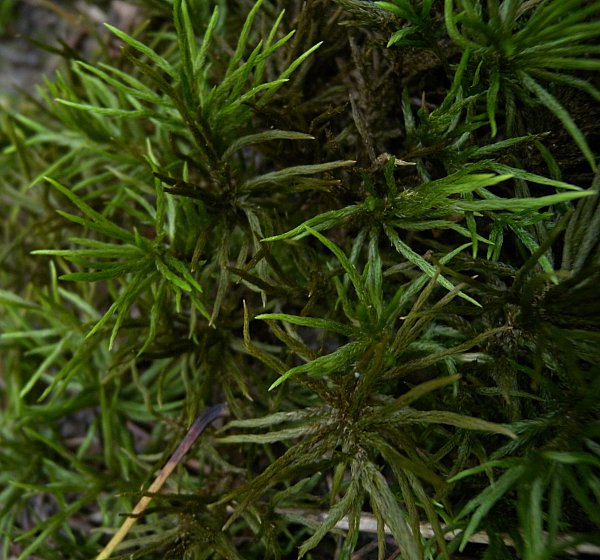
The color of the leaves varies with their age; older leaves are olive green to dark olive green, average-aged leaves are medium green to dark green, and young leaves near the tapered tips of their stems are whitish green or light green. Dry leaves are dull-colored, while wet leaves are more shiny. The overall form of this moss resembles a miniature tree that lacks small branches and twigs. Individual leaves are 1.5–2.5 mm. across; they are lanceolate-ovate to ovate in shape and conspicuously toothed toward the tips of their margins (otherwise, the margins are toothless). The leaves of secondary branches are generally wider in shape and less toothed at their tips than the leaves of tertiary branches. The leaves have midribs that extend nearly to their tips, and they usually have 2 or 4 pleats that extend along their midribs. These pleats are more pronounced when the leaves are dry as they tend to become more shriveled in width. The microscopic leaf cells are rhombic-oblong in shape; they are typically 2-5 times as long as they are across. Because this moss is dioecious, the antheridia (male reproductive organs) and archegonia (female reproductive organs) are located on separate plants. Usually, this moss fails to produce any spore-bearing capsules in a given year. However, during those years when they are produced, each plant can produce along its secondary stem from one to several spore-bearing capsules on erect to ascending stalks (setae). The tertiary stems never produce such capsules.
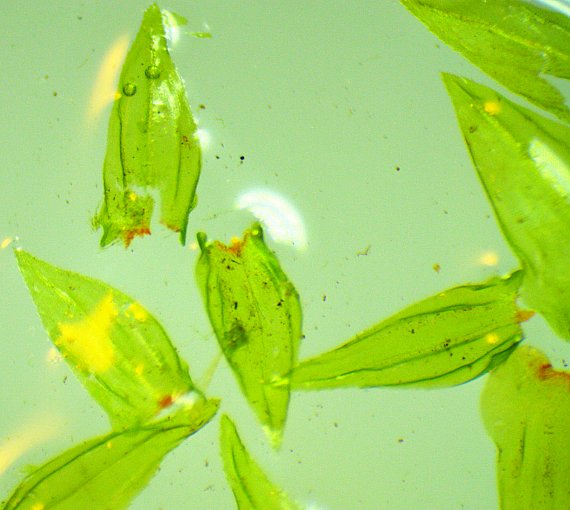
The narrow stalks are terete, reddish brown to red, and smooth; erect spore-bearing capsules occur at their apices. Individual capsules and their lids are about 4-6 mm. long; the red to reddish brown capsule bodies are cylindrical in shape with tapered bases, while their lids (opercula) are narrowly conical or long-beaked and similarly colored. A membranous early-deciduous hood (calyptra) covers the lid and upper body of the capsule. At maturity, the lids fall off their capsules, revealing reddish outer teeth (peristome) and yellowish inner teeth (endostome). These teeth regulate the release of spores. The spores are dispersed by the wind; they are 13-20 micrometers across, globoid in shape, and slightly roughened to minutely bumpy (papillose) across the surface. This moss spreads asexually by means of its sprawling primary stems. It often forms what appears to be a colony of plants, but it is actually one large unisexual plant.
Cultivation: The preference is dappled sunlight to moderate shade, wet to mesic conditions, and soil containing rocky material, humus, or clay-loam. This moss has a tendency to spread by means of its primary stems, which run a little below or a little above the ground. It can tolerate temporary inundation by water. Plants that are exposed to abundant moisture and water tend to be longer, more lax, and more inclined to topple over.
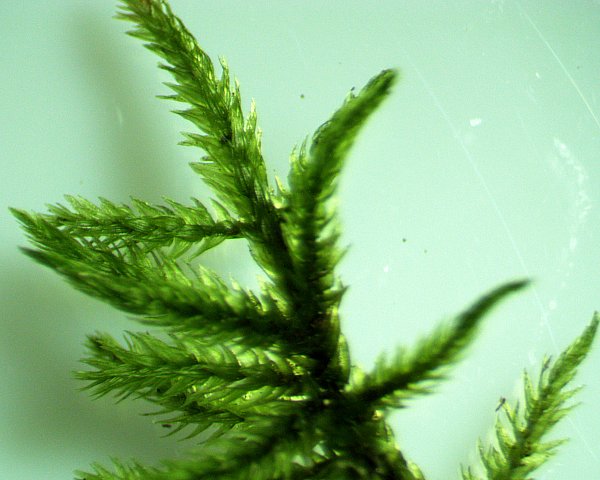
Range & Habitat: American Tree Moss is occasional throughout Illinois, where it is native (see Distribution Map). It is widely distributed in eastern United States and adjacent areas of Canada. Habitats for the typical variety of this moss, Climacium americanum americanum, include ground soil in open woodlands, ground soil along steep wooded slopes, ground soil along the edges of wooded bluffs, ground soil along the slopes of wooded ravines, ground soil along woodland trails, heavy soil or rocky ground along the wooded slopes of river valleys, shaded rocky ground along streams, thin soil of shaded rocky ledges, thin soil on shaded sandstone rocks, thin soil in seepage areas of sandstone outcrops, wooded rocky ground at the top of cliffs, rocky ground of cedar glades, rotting moist tree stumps in woods, tree trunk bases and rotting logs in Cypress swamps, hummocks in Pin Oak flatwoods, and sedge meadows. The other variety of this moss, Climacium americanum kindbergii, is usually found in wetter habitats than the typical variety, causing it to appear less compact and more lax than the typical variety. American Tree Moss is found in high quality natural areas and slightly disturbed natural areas.
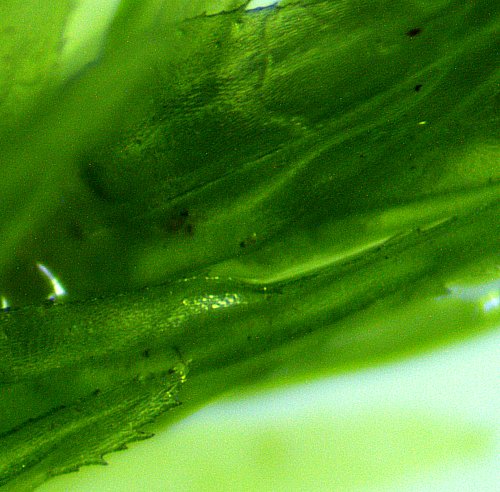
Faunal Associations: The wetland variety of this moss, Climacium americanum kindbergii, provides nesting habitat in conjunction with other mosses for the Four-toed Salamander (Hemidactylium scutatum); see Wood (1955). The typical variety of this moss, Climacium americanum americanum, has been used as construction material for the nests of the American Robin (Breil & Moyle, 1976).
Photographic Location: On heavy soil along a rocky wooded slope of a river valley in west-central Indiana. Close-up photos were taken indoors using a microscope. The photographed moss is Climacium americanum americanum.
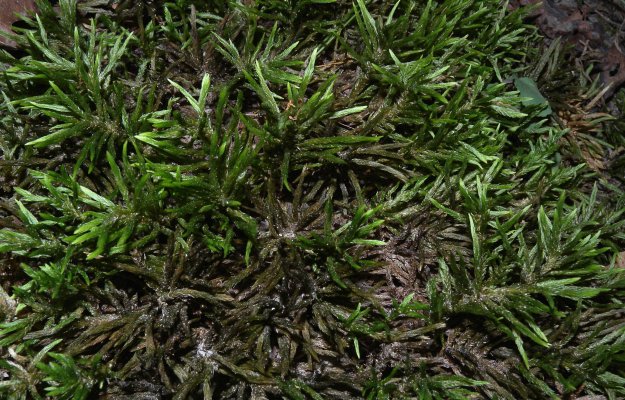
Comments: This attractive moss has an interesting form that resembles the miniature trees that are found as part of the landscape around toy train tracks (it may even be used for this purpose sometimes). This moss has also been used in the past to make decorative wreaths and crosses. The typical variety of this moss, Climacium americanum americanum, is more common than Climacium americanum kindbergii in Illinois. The latter variety is usually found in wetter habitats, including swamps, bottomland woods, and shallow water of streams and rocky depressions. It tends to be taller, more lax, and less densely branched than the typical variety of this moss. The other species in this genus that occurs in Illinois is the less common European Tree Moss (Climacium dendroides). In addition to Eurasia, this latter species is also native to Illinois and other parts of North America. European Tree Moss has a more northern distribution in North America, favoring boreal habitats. This moss appears very similar to American Tree Moss, but there are several features that can be used to distinguish them: 1) the leaves of European Tree Moss tend to be more narrow than those of American Tree Moss, and they have less pronounced auriculate (ear-like) lobes at the base; 2) the leaf cells of European Tree Moss are more elongated (5-9 times as long as they are across) than those of American Tree Moss (2-5 times as long as they are across); and 3) the spore-bearing capsules of European Tree Moss are shorter (3-4 mm. long) than those of American Tree Moss (4-6 mm. long). In addition, European Tree Moss is more likely to be found in wetter habitats than the typical variety of American Tree Moss.